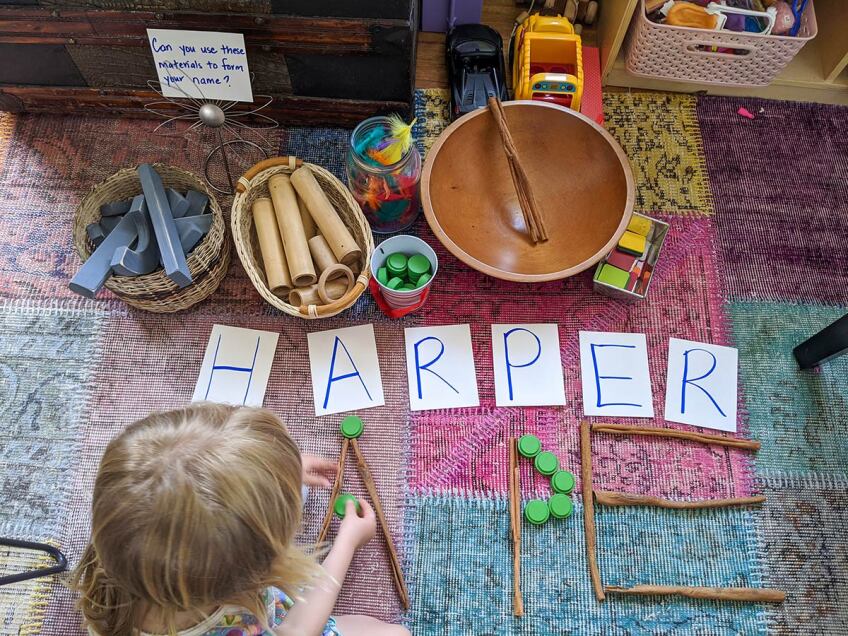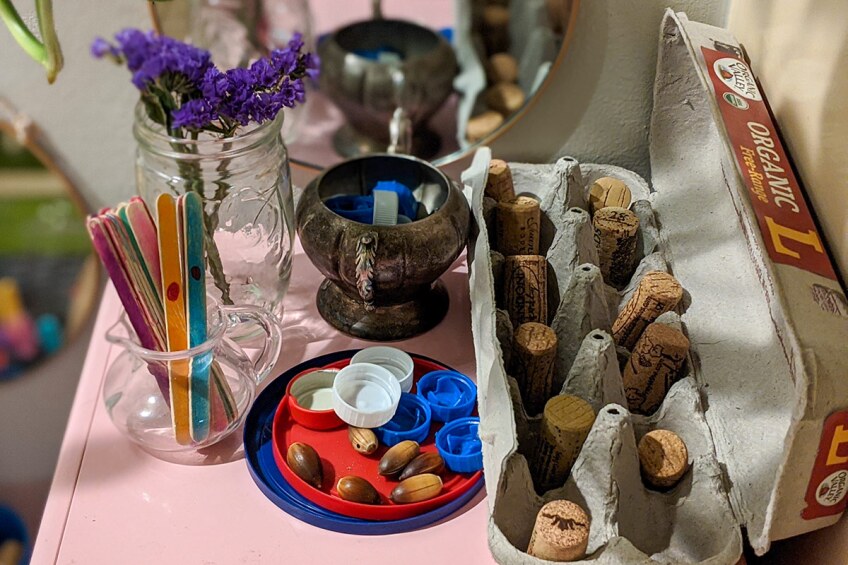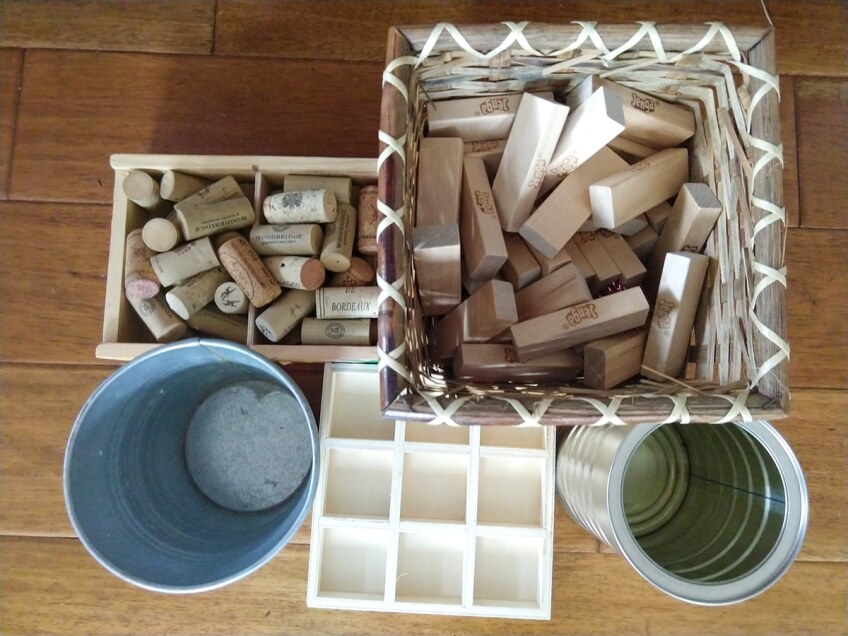Let Them Play! Foster Curiosity in Young Students with Loose Parts

Have you ever seen a child turn an empty box into a spaceship about to blast off? Or a pair of toilet paper rolls into binoculars?
Young children make sense of the world around them through play. Child development experts know that play is what kids need to explore difficult concepts, make deep connections with others and become curious and engaged learners.
The Reggio Emilia Approach is a way of teaching that puts play first. It emphasizes that children are naturally inquisitive, creative and capable, while encouraging educators to tune into children’s learning processes through observation and play. A key part of the approach is to incorporate loose parts into play, which fosters curiosity and metacognition in children.
Although it may sound abstract, loose parts are simply materials that can be moved around, designed and redesigned and tinkered with; they can be anything from pieces or string, empty boxes, buttons and more. These kinds of objects create infinitely more opportunities for creative engagement than static objects like a plastic toy hammer or a pretend piece of food because when children engage with loose parts, they develop skills like problem-solving, creativity, concentration, mathematical thinking, literacy and language. They also experience social-emotional growth and increased self-expression. Over time, their play becomes more open-ended and develops in many different ways.
From cardboard rings to mason jar tops, scarves to ribbons, toilet paper rolls to empty boxes, loose parts are all around us! Toilet paper rolls become binoculars as your child goes on a safari in the living room. Scarves become beautiful dresses for stuffed animals or welcome companions in a dance routine. Mason jar tops become stamps for creating complex patterns in play dough or a bed for a beloved dog figurine. Large cardboard boxes take flight when they turn into airplanes or provide the opportunity for your child to create and decorate their very own ice cream shop. Here’s how to get started.
Gather Loose Parts

Find the following items in your home or encourage your students to have a scavenger hunt to look for them. Then, store the items in small boxes, plastic containers or baskets. It’s important to store these materials at eye level in a dedicated play area so children can access them easily. The items can include strips of paper, bottle caps, Mason jar tops, scarves, ribbon, hair curlers, empty tissue boxes, toilet paper rolls, wine corks, milk jugs, empty spice containers, clean soup cans (without the sharp edge), keys, buttons, wooden spoons, clothes pins, bells, egg cartons, muffin tins, plastic gems, pom poms, beads and recycled plastic can carriers.

Use Loose Parts Play Activity Cards
Instruct children’s caregivers to print out the Loose Parts Play Activity Cards and cut them out. They should be placed in a receptacle like a hat, box, basket, shoebox or bag. Then, ask children to choose a few activities to do each day (remember to support children in reading the activities they choose). After the activities are chosen, invite children to use the found loose parts alongside other items around the house to complete the activity. Additional items might include glue, string, scissors, etc. At the end of the day, place the activities back in the receptacle so children can choose new activities the next day (caregivers can help the children with this at home). It’s okay to repeat the activities, since repetition supports foundational skill development.
Incorporate Natural Items

Along with everyday items found in the home, natural items can be incorporated into loose parts play, too. Invite children to search for sticks, stones, leaves, flower petals, shells, acorns, pinecones and other items outside on a nature walk in the park or around their yard. These natural items can be incorporated into their indoor play area, manipulated during class activities or kept in an easy-to-access area to be brought outdoors during nature time.
Get Creative
The sky’s the limit when it comes to loose parts play. I keep almost anything that might pique my daughter’s curiosity, from old wooden table legs to large boxes. Other ideas include:
- Watch a box turn into a spaceship, and old wooden table legs become a welcome addition to block play as children create epic castles and structures.
- Integrate opportunities for art exploration by using an old sheet and setting up boxes and paint so children can tap into their imaginations.
- Create a small world play set up with play dough, small figurines, natural loose parts like acorns and sticks and plastic gems. Small world play supports children in exploring their feelings, thinking about ideas and scenarios that might be different from their everyday experiences, as well as vocabulary development.
- Use a variety of synthetic and natural loose parts such as plastic gems, herbs (like rosemary, thyme and oregano) and old flower petals alongside play dough. You can also add a touch of child-friendly essential oil if you have it on hand, like lemon or lavender. Young children learn by using multiple senses simultaneously, so this type of sensory play is a proven way to build cognitive skills.
Let Them Play

Provide children with free, unstructured time to explore the loose parts. They might incorporate small figurines of people and animals alongside them to partake in robust pretend play and storytelling, or use a scarf as a blanket to take on a picnic with imaginary friends. You might find them using corks, pinecones and plastic gems with old muffin tins to make a very special birthday meal for their favorite stuffed animal.
What other ways might you incorporate loose parts into daily learning experiences?



